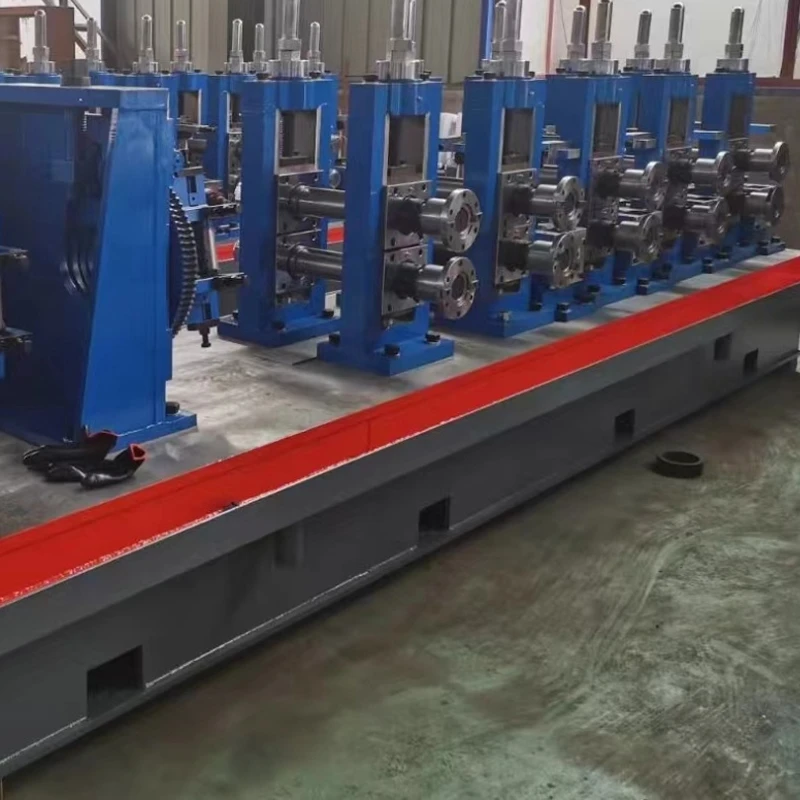de coiler
Understanding De-Coilers Essential Components in Metal Processing
In the world of metal processing, efficiency and precision are crucial for producing high-quality products. One key piece of equipment that plays a vital role in this industry is the de-coiler. This machine serves as a foundational element in various manufacturing processes, particularly in the coil-to-sheet conversion systems used in industries such as automotive, construction, and appliances.
What is a De-Coiler?
A de-coiler, also known as an uncoiler, is a device designed to unwind a coil of material—typically metal sheet—so it can be processed into various forms or further fabricated into finished products. The coil can be made of different materials, including steel, aluminum, and copper, depending on the intended application. The de-coiler is responsible for providing a steady feed of the material into downstream machinery like slitting machines or roll formers, ensuring a smooth and efficient production line.
How Does a De-Coiler Work?
The operation of a de-coiler is relatively straightforward but requires precision engineering to ensure it functions correctly. It usually consists of a mandrel (a spindle) around which the coil is placed, and it employs various mechanisms to unwind the coil smoothly. The de-coiler may utilize a hydraulic, pneumatic, or mechanical system to control the tension and ensure that the material is unwound at a consistent rate.
One of the essential features of a de-coiler is its ability to manage tension. Too much tension can lead to damage to the material, while too little can cause inconsistencies in feeding. Advanced de-coilers are equipped with automatic tension control systems that adjust based on the material characteristics and production speed, allowing for maximum efficiency and minimal wastage.
Types of De-Coilers
De-coilers come in various designs to accommodate different types of materials and production requirements. Some common types include
de coiler

1. Manual De-Coiler As the name suggests, this type requires manual operation for loading and unloading coils. It is typically less expensive and suitable for smaller operations.
2. Semi-Automatic De-Coiler This variant reduces manual labor by automating some functions. Operators might still need to oversee the loading but the unwinding process is often mechanically assisted.
3. Fully Automatic De-Coiler This high-tech version functions without significant operator intervention. It can handle multiple coils, adjust tensions automatically, and integrate seamlessly with other processing machinery. These de-coilers are often found in larger factories with high production demands.
4. Heavy-Duty De-Coiler Designed for heavier and thicker materials, these models can handle much greater weights and are built to withstand the stresses of heavier operations.
Importance in Metal Processing
The role of a de-coiler in metal processing cannot be overstated. It serves as the starting point for many manufacturing processes, ensuring that materials are delivered to subsequent machines reliably and efficiently. A high-quality de-coiler minimizes the risk of errors in feeding, reduces downtime associated with metal processing, and enhances overall productivity.
Moreover, investing in a reliable de-coiler can lead to significant long-term cost savings for manufacturing businesses. Not only does it decrease production time, but it also helps reduce material waste caused by mishandling or feeding errors.
Conclusion
In conclusion, de-coilers are critical components of the metal processing industry. They enable the efficient handling of materials and are essential for maintaining the flow and integrity of the production line. Understanding their function and the technology behind them can help manufacturers optimize their operations, increase productivity, and ultimately deliver better products to their customers. As technology continues to advance, we can expect that de-coilers will evolve, incorporating smarter controls and enhanced automation features to meet the ever-growing demands of the industry.
-
Top Straightening Machine Supplier – High Precision Solutions for Metal ProcessingNewsJun.10,2025
-
High Efficiency Rotary Shear Machine for Precision Cutting Versatile Rotary Shear Shredder & Cordless OptionsNewsJun.10,2025
-
High-Precision Cold Rolled Steel Machine for Quality ProductionNewsJun.09,2025
-
Metal Tube Making Machine – High Precision & AutomationNewsJun.09,2025
-
Automated Lami Tube Manufacturing Machine High Output & PrecisionNewsJun.09,2025
-
Premium Roll Forging Machines High-Precision Metal Forming SolutionsNewsJun.09,2025


